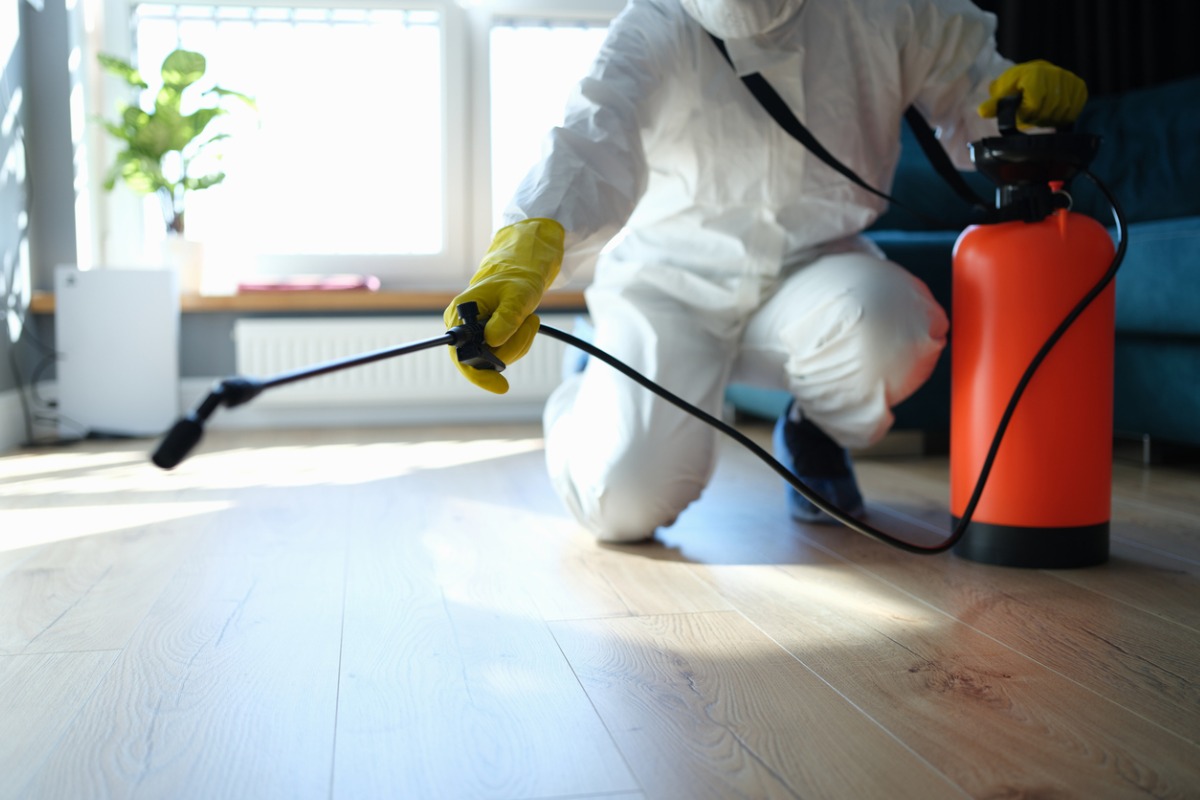Reliable Satisfaction with Expert Services from Pest Control Lockhart
Reliable Satisfaction with Expert Services from Pest Control Lockhart
Blog Article
Exploring Invasion and Therapy Strategies in the Globe of Insect Control
The landscape of pest control incorporates a myriad of difficulties, specifically as invasions of common family pests proceed to develop. Recognizing the behaviors and reproductive patterns of these hassles is important for developing efficient therapy techniques. By incorporating safety nets with advanced monitoring techniques, such as Integrated Bug Monitoring (IPM), property owners can much better safeguard their atmospheres. The effectiveness of these methods might differ significantly based on particular conditions. What hidden factors add to the success or failing of these approaches in different settings?

Common Home Vermin
When it pertains to handling our home, recognizing usual household pests is essential. These insects not only disrupt our comfort but can also position health risks and damage residential or commercial property. The most prevalent household pests include ants, roaches, rats, termites, and bed insects.
Ants, usually seen foraging in kitchen areas, can contaminate food and develop big colonies. Rats, including computer mice and rats, can trigger architectural damages and lug conditions like hantavirus and salmonella.
Acknowledging the signs of these parasites, such as droppings, nests, or bite marks, is essential for very early intervention (Pest Control Lockhart). Correct cleanliness techniques, sealing access points, and keeping a clutter-free atmosphere work preventative procedures. By identifying these typical household bugs and understanding their actions, homeowners can take aggressive steps to alleviate infestations, making sure a much healthier living atmosphere
Recognizing Pest Infestations
Pest problems can escalate rapidly, turning a minor inconvenience into a considerable issue if not resolved without delay. Usual variables adding to problems consist of inadequate hygiene, architectural susceptabilities, and seasonal adjustments that drive parasites inside.
Recognizing the kind of parasite is crucial, as various varieties display different habits and reproductive rates. For instance, rodents might develop nests in concealed areas while bugs like cockroaches thrive in wet settings. Early discovery commonly rests on recognizing signs such as droppings, munch marks, or uncommon audios, which can suggest an issue before it becomes extreme.
Ecological conditions also play an essential function in insect proliferation. Cozy, damp climates can promote the fast growth of parasite populations, while changes in landscape design or building can inadvertently develop conducive environments. Normal evaluations and preventative measures are vital to mitigating the danger of infestations. An educated approach to comprehending these characteristics lays the groundwork for reliable insect monitoring techniques in the future.
Therapy Approaches and Techniques
Efficient therapy approaches and strategies are important for alleviating parasite infestations and restoring a risk-free setting. A complex approach is frequently best, integrating chemical, organic, and mechanical approaches customized to the details pest and the seriousness of the invasion.
Chemical treatments include making use of pesticides and herbicides, which can successfully remove parasites. Proper application and adherence to safety standards are critical to decrease threats to human beings and non-target microorganisms. Integrated Bug Administration (IPM) motivates the cautious use of chemicals as a last hope, relying rather on surveillance and limit levels to identify intervention demands.
Biological control approaches include introducing all-natural predators or bloodsuckers to minimize pest populaces. here This method is significantly prominent, particularly in farming settings, as it advertises environmental sustainability.
Mechanical techniques, such as traps and barriers, provide instant remedy for bugs without introducing chemicals. Alternatives include sticky catches for pests or physical barriers for rodents.
Inevitably, the option of therapy method should consider the specific pest, the setting, and prospective impacts on human health and wellness and environments. A balanced mix of these methods can effectively handle problems while promoting lasting pest control options.
Preventative Steps for Residence
Proactively addressing insect problems before they intensify is essential for maintaining a healthy home setting (Pest Control Lockhart). Implementing effective safety nets can significantly decrease the chance of problems, ultimately protecting both your building and well-being

Correct landscape design likewise plays a vital duty in avoidance. Keeping bushes and trees trimmed away from your home reduces the opportunities of parasites locating their method inside your home. Additionally, guarantee that drainage systems are operating successfully to protect against standing water, which can attract mosquitoes and other pests.
Finally, routine examinations are a good idea. Frequently looking for signs of bug activity enables very early intervention. By taking on these safety nets, home owners can produce an environment that is much less congenial to parasites, consequently enhancing their total lifestyle and lowering the requirement for extensive bug control interventions.
Business Pest Control Approaches
An extensive strategy to industrial parasite control is vital for businesses aiming to keep a safe and sanitary environment. Efficient approaches involve a mix of regular evaluations, staff member training, and the implementation of Integrated Bug Monitoring (IPM) practices.
Routine inspections allow very early discovery of insect activity, permitting timely intervention. Services need to develop a routine schedule for these assessments, concentrating on find here risky locations such as kitchens, storage spaces, and garbage disposal sites. Employee training is similarly critical; staff ought to be informed on the indicators of parasite infestations and the significance of reporting them promptly.
Applying IPM practices helps reduce insect problems sustainably. This consists of environment adjustment, such as securing access factors and lowering mess, along with employing all-natural deterrents prior to turning to chemical therapies.

In addition, teaming up with a qualified parasite control provider ensures access to expert knowledge and innovative therapy alternatives. This collaboration can cause personalized insect control prepares tailored to the specific demands of the organization, decreasing threats and improving overall efficacy. Inevitably, an aggressive and educated method fosters a pest-free environment, guarding both public health and wellness and company credibility.
Conclusion
In verdict, effective bug control necessitates a detailed understanding of usual home bugs and their behaviors, combined with targeted therapy approaches. Executing preventative measures Homepage together with therapy strategies such as Integrated Insect Administration and organic control enhances the capability to alleviate problems.
Report this page